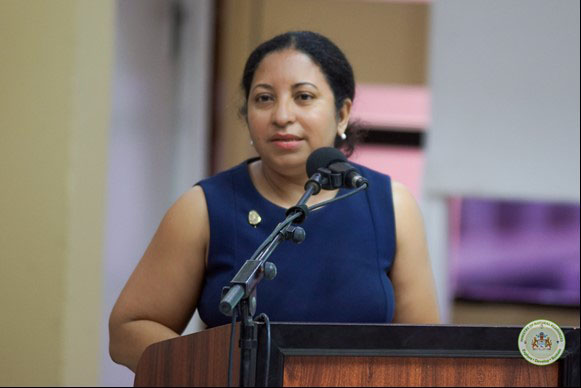Guyana’s mangrove forests which are an important part of coastal sea defence will soon benefit from a multi-institutional agreement that will allow for enhanced monitoring and evaluation as well as much-needed protection.
In a statement yesterday, the University of Guyana informed that it had on Tuesday, signed a Memorandum of Understanding (MoU) with SERVIR-Amazonia, and the National Aeronautics and Space Administration (NASA), to create an inter-institutional collaboration that will strengthen the development of information services for mangrove mapping and monitoring. The MoU will remain in effect until December 20 of 2023.
SERVIR-Amazonia, a subsidiary of SERVIR Global, is part of a joint development initiative by NASA and the United States Agency for International Development (USAID). Since 2005, SERVIR has worked in association with countries to use the information provided by Earth Observation satellites (EO) and geospatial technologies. SERVIR-Amazonia is a five-year programme run by the Alliance of Bioversity International and the International Center for Tropical Agriculture (CIAT).
According to the release, the signing of the MoU, paves the way for the partners to prepare the nation’s geospatial scientists for the monitoring of Guyana’s ecosystems which will be enhanced via academic research. The partnership will result also in the monitoring and evaluation of mangroves in Guyana using the latest geospatial technologies and satellite imagery to map the extent and structure of mangrove forests along the coastland. The data retrieved will allow for better land-use planning, policy-making and actions that protect mangroves from being converted to other land uses, as well as to plan mangrove protection efforts for farmers in low-lying coastal regions. In addition, it will allow timely action on hotspots of deforestation.
The signing of the MoU is the culmination of a series of workshops over the last 18 months led by NASA scientists and those from UG’s Faculty of Earth and Environmental Sciences (FEES) and the Centre for the Study of Biological Diversity (CSBD) which included over 15 Government of Guyana entities.
The Agreement was signed by Professor Paloma Mohamed Martin, Vice-Chancellor, University of Guyana; and Jesús Quintana, Managing Director for the Americas of the Alliance of Biodiversity International and International Center for Tropical Agriculture (CIAT) and attended by senior officials of UG and representatives of NASA and USAID.
UG will participate in the co-development of the mangrove monitoring platform, and support the validation of data products with field data. It will also engage in workshops and training events led by SERVIR-Amazonia and its partners, and participate in activities related to the methodological development to monitor mangrove forests along Guyana’s Coast.
In her remarks, Mohamed said the university “is aligned with Guyana’s goal as an environmentally responsible State.” She said the signing of the MoU with SERVIR-Amazonia and partners is part of a response to improve the use of geospatial data and information. The Vice Chancellor said too that via the historic signing of the agreement, the research conducted will assist the University with the development of its Human Resiliency Systems programme, its new geosciences programme, and data sciences programme now in its developmental stage.
Similarly, Quintana celebrated this important milestone, “The Alliance of Bioversity International and CIAT works on landscape and biodiversity conservation, as well as on digital inclusion. Based on our joint research we can collectively innovate and design better policies to confront the challenges the Amazon basin faces.”
The University of Guyana, NASA, and SERVIR-Amazonia, have previously conducted several training sessions which benefitted students of FEES and officers of several governmental agencies, the release added.






